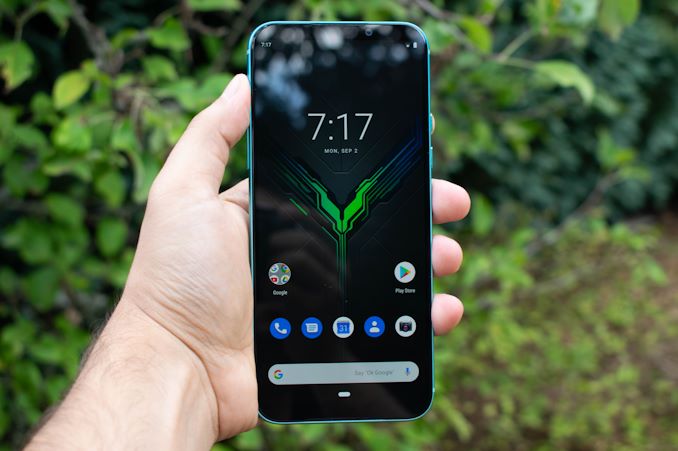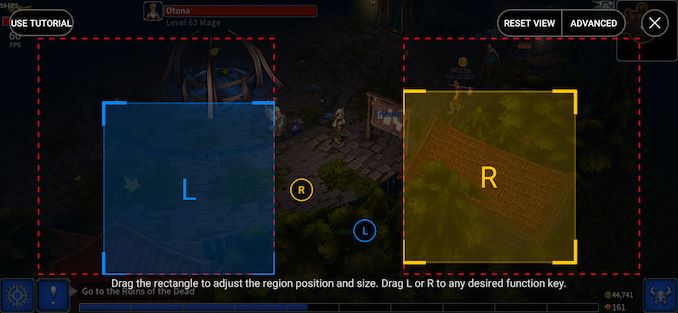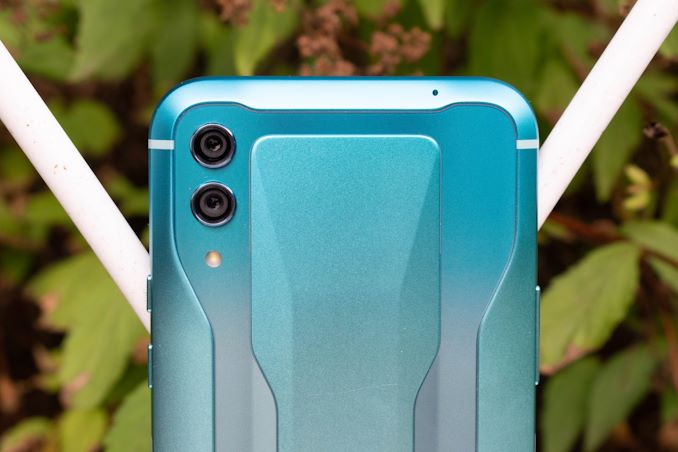The Black Shark 2 Review: A Gaming Phone's Existential Crisis
by Andrei Frumusanu on September 25, 2019 8:00 AM EST- Posted in
- Mobile
- Smartphones
- Xiaomi
- Snapdragon 855
- Black Shark 2
Conclusion & End Remarks
The Black Shark 2 is actually the first “gaming” phone that I’ve gotten to dedicate a review to. Going into the review I had a few preconceptions of what this means and what the basic checkmarks of what a gaming phone should be and what it should deliver.
First of all, in terms of design, the Black Shark 2 does put a checkmark on its “gaming aesthetics”, and the accentuated modern design elements of the phone very much remind one of the typical gaming products that consumers are accustomed.
The build quality of the phone is excellent and feels very solid; it’s also of a reasonable size and weight – keeping the size in check with delivering a gaming phone experience in a 75mm wide form-factor.
The Black Shark 2’s 6.39” AMOLED screen is quite adequate and should satisfy most users, albeit it doesn’t showcase any particular strengths and its colour calibration also seems to have larger weaknesses.
The best thing about the display is actually the touch input controller that operates at a higher-than-usual 240Hz, something that’s particularly noticeable in the scrolling latency of content and surely would also help in the touch input latency of games.
On the software side, I wasn’t too convinced of the value of the Shark gaming suite. In essence, it’s just a glorified launcher UI with a lot of gimmicks. The one real benefit I found to be actual a practical feature is the “MasterTouch” feature which allows you to map two pressure sensitive areas on the screen to two new additional adjustable UI functions in a game, essentially enabling you to turn in-game analog sticks to also serve as click-buttons, much like on a real controller joystick.
The cameras on the Black Shark 2 just aren’t very good. I had expected the phone to at least match the very good daylight processing of the Xiaomi Mi9, but alas that’s not the case, and the BS2 just doesn’t offer the same more consistent and superior camera calibration and post processing. It has worse exposure, colour balance, and details, especially on the zoom module that showcases a detrimental contrast and sharpening filter.
In low-light, the phone is actually even worse than the Mi9 due to the fact that it lacks the dedicated night mode. It’s in essence the worst camera I’ve tested in recent years.
A Gaming Phone's Existential Crisis
I mentioned I had preconceptions of what a gaming phone should be able to deliver, and the one aspect that I would value above all others in such a product, is the gaming performance that it's able to deliver.
On the CPU side of things, the BS2 fares quite OK and is about average to a little below average compared to other Snapdragon 855 devices. The benefit of this more conservative tuning is the fact that it does quite well in terms of battery life, and its 4000mAh battery does showcase itself as an advantage compared to other devices.
In terms of gaming/GPU performance, the Black Shark 2 is simply an utter disaster and an embarrassment of a device. The matter of fact here is that the phone ended up with the single worst sustained performance of any Snapdragon 855 phone in the market. The phone’s thermal throttling is very aggressive, and though it’s able to maintain very reasonable skin temperatures, it comes at a great cost of performance.
The problem here is that Xiaomi continues to try to mislead its customers as to the real performance of the phone – the firmware detects benchmarks and disables thermal throttling in order to get better scores. In this scenario of course it showcases excellent performance, but I stopped the phone in its tracks after it had reached an excess of 57°C, at which point it was uncomfortably hot to hold. The issue isn’t new to the Black Shark 2 as last year’s Black Shark behaved the same – showcasing great cheating behaviour while its real performance was just lacklustre.
Here’s the thing, the Black Shark 2 isn’t all that cheap, coming at a minimum of 549€ for the base storage model. For a phone which completely fails at the very thing it’s designed for, I can’t see how one would able to justify its purchase. The cameras are massively underwhelming, and the display is also lacklustre compared to other phones. The only redeeming features of the Black Shark 2 remains its 240Hz touchscreen, the MasterTouch feature, and above-average battery life.
Currently I just don’t see how the BS2 can justify its existence over any other regular non-gaming phone, the compromises and disadvantages vastly outweigh the one or two features which actually do benefit the phone.













63 Comments
View All Comments
eastcoast_pete - Wednesday, September 25, 2019 - link
Thanks Andrei, also and especially for calling a (now major) manufacturer -Xiaomi- out for having benchmark cheating built into their software! The hardware side is just as bad - why all style, no substance? The aluminum case almost screams for use as a heat sink, especially now that phones are all closed up.Regarding gaming phones: will you have a chance to test the ASUS ROG2? Might tell us if all these "gaming" phones are all smoke and mirrors. The ROG 2 is even more expensive, so it'd better be spectacular.
Andrei Frumusanu - Wednesday, September 25, 2019 - link
We'll have a ROG2 review out next week.s.yu - Wednesday, September 25, 2019 - link
Andrei, please be sure to dig into Mate30P's slo-mo with detail, now that the 1-to-4 frame interpolation is confirmed, I'm not the only one suspecting that the 720P is also interpolated from an inferior readout that skips even more lines!isthisavailable - Thursday, September 26, 2019 - link
The Rog phone 2's size and weight look huge. Can you please include it's everyday usability in your review? I'm tempted to buy but 77cm wide and 9mm thicc phone looks a bit too much. And 240g weight!brucethemoose - Wednesday, September 25, 2019 - link
I can tell you the Razer Phone 2 is the real deal. Performance is fine, but holy heck, the screen! Im not even a phone gamer, but 120hz is like night and day, and you couldn't pay me to go back to a phone with a 60hz display.s.yu - Wednesday, September 25, 2019 - link
What do you think of 240Hz then? A phone with that was just released by Sharp.Mediocre phone by other metrics though.
brucethemoose - Wednesday, September 25, 2019 - link
Its probably pretty similar, as Razer uses the same Sharp LCD line those Aquos phones use.But on 120hz vs 240hz specifically... I don't know? I've never even laid eyes on 240hz anything. I'd guess that you need more tightly integrated VRR support from base Android and something faster than an LCD to really make use of it, but what do I know?
Also, for a $400 phone, the RP2 is suprisingly good by other metrics. Its not perfect (no 3.5mm, no OLED, 845 instead of 855), but I don't feel like I traded much off to get 120hz.
hemedans - Wednesday, September 25, 2019 - link
RoG 2 is around $500 base model with 128GB/8GB memory, probably best Gaming phone for now, waiting for Review too.s.yu - Wednesday, September 25, 2019 - link
I thought that was the Chinese "Tencent special edition" price, yet I checked and at least India gets the same price...it seems US customers get ripped off...or is only the top tier available there?$500 sounds good but 128GB really doesn't last.
Tams80 - Thursday, September 26, 2019 - link
Well, the Tencent thing is a deal between ASUS and Tencent (I'm guessing mainly subsidised by Tencent). I'm guessing India is a mix of a deal with some company and lower variation due to India having lower household incomes.